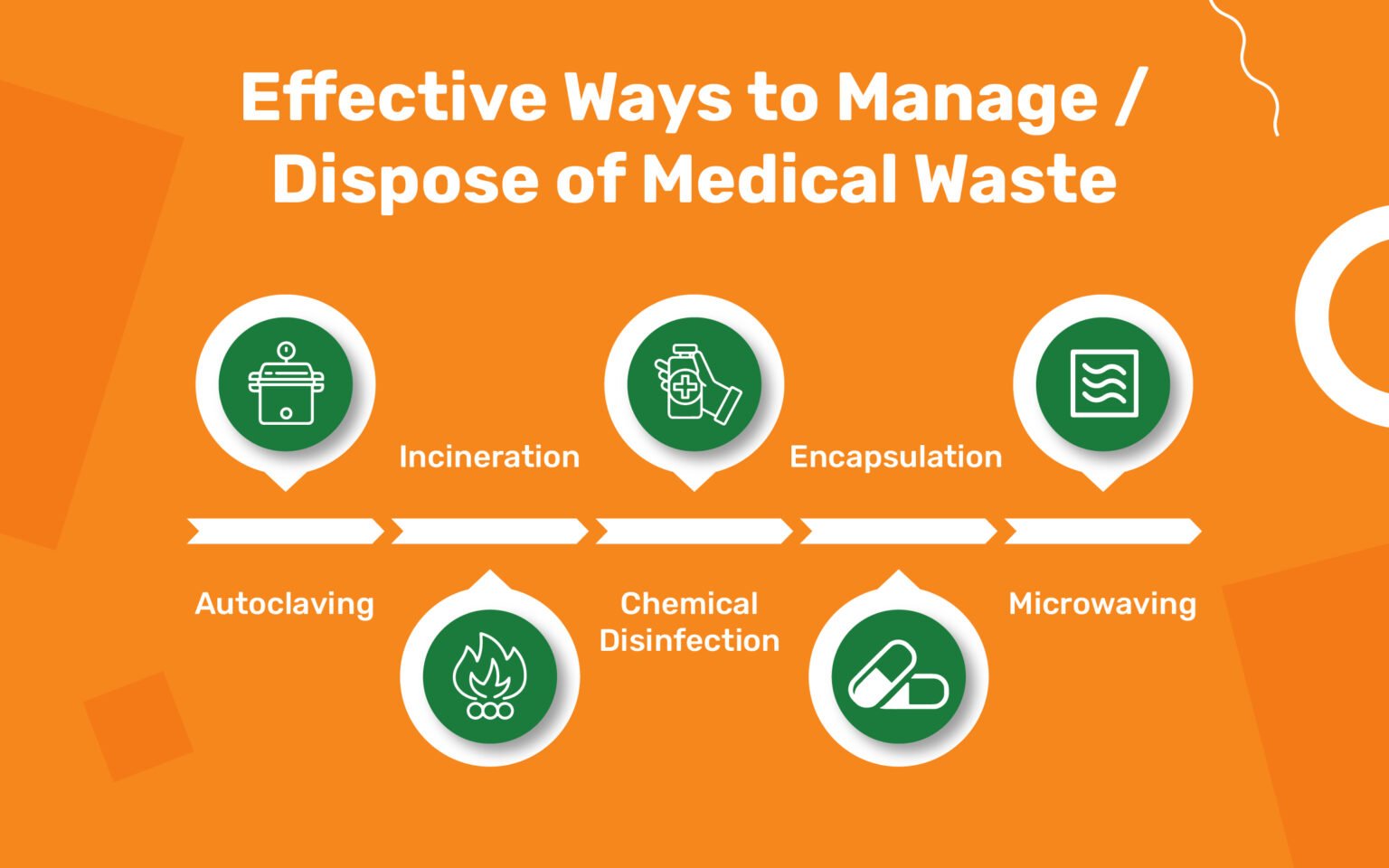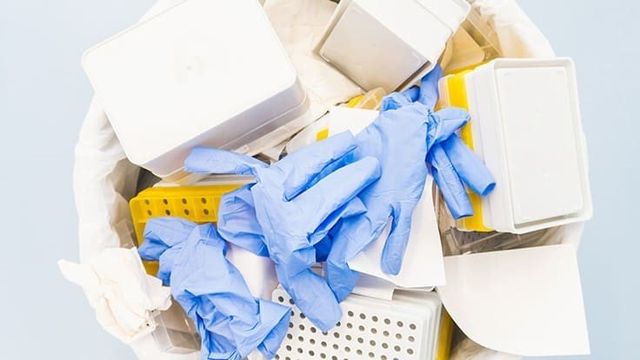Community Care: Seamless and Reliable Medical Waste Removal Near Me
Community Care: Seamless and Reliable Medical Waste Removal Near Me
Blog Article
Remain Ahead of Rules: Professional Suggestions on Medical Waste Disposal
In a world where the healthcare industry is constantly evolving, it is imperative for medical facilities to stay ahead of regulations when it comes to the correct disposal of clinical waste. From understanding the various categories of medical waste to implementing the appropriate collection and partition methods, this conversation will certainly supply actionable suggestions and valuable understandings to assist centers stay ahead of regulations in the ever-changing landscape of clinical waste disposal.
Comprehending Clinical Waste Categories
Comprehending clinical waste groups is essential for appropriate disposal and management in medical care facilities. Medical waste refers to any kind of waste created by medical care tasks that might posture a hazard to public health and wellness or the atmosphere. It is essential to categorize clinical waste properly to guarantee its secure handling, therapy, disposal, and transportation.
There are a number of groups of medical waste that healthcare centers need to be aware of. One of the most usual groups include transmittable waste, pathological waste, sharps waste, pharmaceutical waste, and chemical waste. Each category has particular standards and regulations for its correct administration and disposal.
Pathological waste refers to human tissues, organs, or body parts that need special handling and disposal. Pharmaceutical waste makes up ended, extra, or polluted medications that require cautious handling and disposal.
Staying Up-To-Date With Regulatory Modifications
Remaining current with regulatory changes is vital for medical care facilities to make certain conformity and proper monitoring of clinical garbage disposal. medical waste removal service. With policies regularly progressing, it is vital for health care facilities to remain up-to-date to prevent penalties, penalties, and prospective harm to the environment and public health
To stay in advance of regulative modifications, healthcare facilities must develop a system for tracking and tracking updates. This can be done by subscribing to regulatory newsletters, attending meetings and workshops, and proactively joining industry organizations. Additionally, centers ought to mark a team member or group responsible for remaining informed and distributing info to pertinent stakeholders.
Regular interaction with regulatory firms is also crucial. Healthcare centers should develop relationships with regional, state, and government agencies to guarantee they recognize any type of adjustments in policies that may influence their waste monitoring methods. This can be done via regular meetings, participation in public remark durations, and positive involvement with regulatory firms.
In addition, health care facilities must consider partnering with waste monitoring business that specialize in clinical waste disposal (medical waste disposal services with WasteX). These firms are frequently fluent in the current policies and can supply advice and support to ensure compliance
Carrying Out Proper Collection and Segregation Techniques
To properly handle medical waste disposal, health care facilities must establish proper collection and segregation techniques according to governing guidelines. Carrying out these techniques makes certain the secure handling and disposal of possibly unsafe products, safeguards the environment, and reduces the risk of infections and injuries to healthcare workers and the basic public.
Appropriate collection and partition techniques include the use of designated containers and classifying systems. Medical care centers need to give plainly identified containers for different types of clinical waste, such as sharps, transmittable waste, pharmaceutical waste, and non-hazardous waste. These containers need to be color-coded and plainly marked to avoid complication and promote very easy recognition.
In addition, health care facilities need to educate their personnel on the appropriate procedures for collecting and segregating medical waste. This consists of informing them on the various kinds of waste, the appropriate containers to make use of, and the importance of adhering to laws and medical waste disposal services with WasteX guidelines. Routine training sessions and refresher training courses should be performed to make certain that personnel stay updated on best techniques.
Moreover, healthcare centers ought to develop a system for routine collection and disposal of clinical waste. This may entail partnering with accredited waste management business that focus on medical garbage disposal. These companies will certainly ensure that the collected waste is carried and dealt with in conformity with regulatory demands.
Choosing the Right Disposal Techniques

Incineration is one of the most effective and common methods for taking care of specific sorts of clinical waste, such as pathological waste and sharps. It entails the regulated burning of waste at high temperature levels, decreasing it to ash. Incineration can release hazardous pollutants into the air and add to air contamination.

Chemical treatment includes the use of chemicals to counteract the waste and disinfect. Microwave treatment utilizes microwave energy to heat and sanitize the waste.
Making Certain Conformity Via Documentation and Training
After carefully taking into consideration the appropriate disposal approaches for medical waste, health care facilities have to ensure compliance with guidelines and lessen ecological effect by executing efficient paperwork and training procedures. This step is important in preserving a risk-free and sustainable setting useful reference for both health care workers and the general public.

Training is just as important in making sure conformity with regulations. Health care employees who manage clinical waste should get proper training on waste partition, dealing with, and disposal procedures. This training ought to cover subjects such as the correct use of personal protective devices, recognition of different types of waste, and the right disposal approaches for each and every waste category. By offering detailed training, medical care facilities can empower their personnel to make educated choices and lessen the threat of inappropriate garbage disposal.
Conclusion
In conclusion, staying ahead of regulations in clinical garbage disposal is essential for healthcare facilities. medical waste removal services. Comprehending the different categories of clinical waste, remaining updated with regulative modifications, implementing proper collection and partition techniques, selecting the appropriate disposal methods, and making sure compliance through documents and training are all crucial steps. By following these standards, health care organizations can effectively take care of and dispose of medical waste in a liable and risk-free fashion
From recognizing the various classifications of clinical waste to implementing the ideal collection and segregation approaches, this discussion will certainly supply workable suggestions and beneficial insights to aid facilities stay ahead of guidelines in the ever-changing landscape of medical waste disposal. - medical waste disposal services with WasteX
The most typical groups consist of infectious waste, pathological waste, sharps waste, pharmaceutical waste, and chemical waste. Health care centers should provide clearly identified containers for various kinds of clinical waste, such as sharps, contagious waste, pharmaceutical waste, and non-hazardous waste. Medical care centers should establish an extensive system to tape and track all elements of clinical waste disposal, including kinds of waste created, amounts, and disposal approaches made use of. Medical care employees that take care of medical waste ought to get proper training on waste segregation, dealing with, and disposal procedures.
Report this page